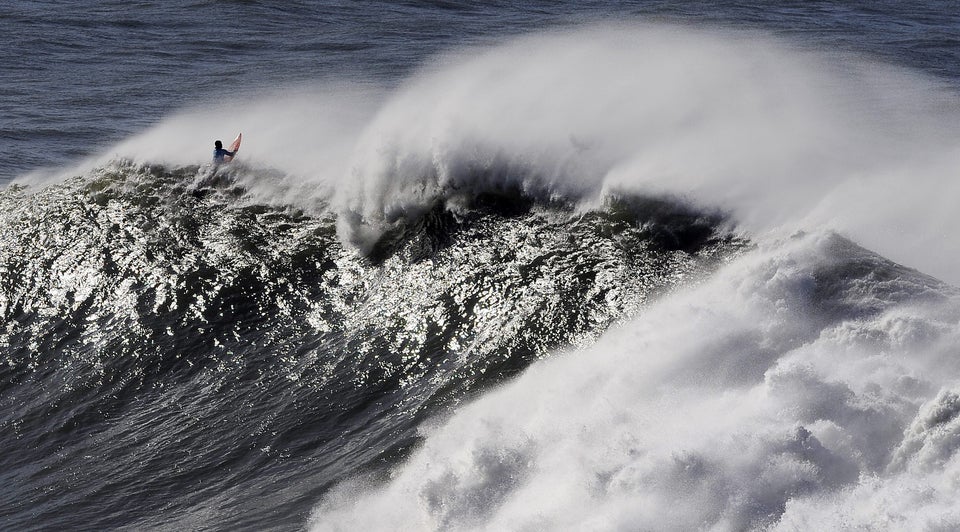The surfing industry has been struggling. Big retailers are facing market saturation -- Billabong recently reported a $536 million loss -- and about half of all independent surf shops worldwide shut down during the recession.
It's no surprise then that the future of the surfing industry -- to say nothing of the soul of the sport itself -- is currently being debated by some of surfing's biggest names and retailers. For some, surf parks, which use massive pools to generate artificial waves, offer opportunities for the sport to grow both financially and in terms of reach, but skeptics worry about the effects of artificial waves on the sport's unique and treasured culture.
At the Surf Park Summit, which was recently held in Laguna Beach, industry experts got together with entrepreneurs, engineers and designers to discuss the feasibility of surf parks big enough to attract professional surfers. Tom Lochtefeld, owner of a wave technology company called Wave Loch, said it would cost between 15 and 25 million dollars and require a two-acre large pool in order to allow surfers to paddle out and find consistent, 10-foot barrels. The cost to the surfer? As low as $1 a wave, according to Matt Reilly, director of operations and marketing at Surf Park Central, which put on the summit. (Renowned surfer Kelly Slater even tried to open his own wave park in Australia, but financial issues proved tricky and the project appears to be delayed indefinitely.)
Surf board manufacturers, apparel retailers, and serious surfers all agree that there are legitimate advantages to artificial waves. For starters, surf parks would take geography out of the equation, allowing everyone from the midwest to the middle east to experience the joy and thrill of surfing. The market expansion is an obvious boon to retailers, but it's also appealing to advocates of a national surf league, a hypothetical professional league much like the NBA.
For most surfers, however, the holy grail would be to finally get surfing accepted as an Olympic sport. Surf parks would remove two of the biggest hurdles so far: ensuring standardized waves and unlocking the ability to host a surfing competition anywhere in the world. Fernando Aguerre, president of the International Surfing Association, told the AP that "Without man-made waves, there will not be Olympic surfing. It's the ultimate wave-sharing that you can imagine."
Even casual surfers are falling for the appeal of surf parks. Samantha Akre hasn’t surfed in the ocean for more than a year. “This is just so much more fun," she told the AP. Cliff Char, who's been surfing for 15 years, agrees. "In a park, you can always get in a perfect position," he said. "The wave will always be perfect and you can really work on your surfing."
But as anyone who has seen the 80s classic "North Shore" knows, surfing culture is much more than just technique and competitions. Soul surfers believe that the connection to nature and the ability to read waves are vital aspects of surfing. 'Surf culture,' according to freelance writer Zac Heisey, is "about having a genuine respect and connection with the ocean." Other critics argue that the environmental toll of powering such monstrous waves is antithetical to surfing values.
The imposition of technology on a classic and beloved sport is nothing new. As the AP points out, skiers who were used to hiking mountains were opposed to chair lifts and many rock-climbing purists were resistant to rock walls in urban gyms.
Whether they be chlorinated, perfectly predictable waves, or salty and unruly ones, it's hard to argue with Duke Kahanamoku, the famous Hawaiian waterman, who once said that, "the best surfer out there is the one having the most fun."
